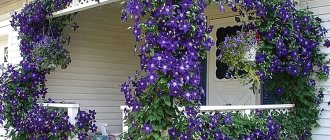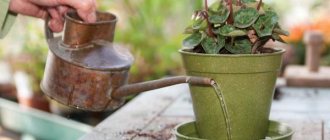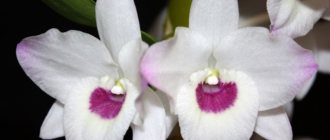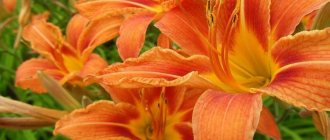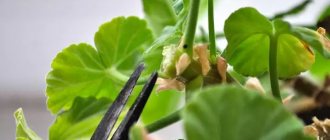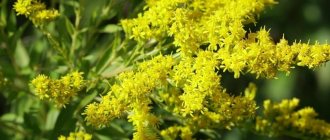The orchid is considered one of the most beautiful and mysterious plants on Earth. Representing a huge family uniting 750 genera and 20 thousand species, it delights with its diversity. Its petals are painted in all the colors of the rainbow, including green, which is not so common in the world of flora. The biological capabilities of the orchid are so wide that in ancient times the plant was considered almost a panacea for all diseases, but, if necessary, it was insidiously used as a poison.
The aromas of orchids are amazing - exquisite floral, complemented by notes of cinnamon, citrus fruits and even coffee. In nature, there are flowers similar to orchids in the shape of their petals and leaves, most of them are as mysterious as their titled “twin”.
Flowers similar to orchids: name, photo
Orchids are people's favorite indoor plants. But not every person has the opportunity to provide these flowers with proper care. There are less whimsical flowers, similar to orchids.
- Alstroemeria
- Schizanthus
- Vechernitsa (night violet)
- Iris
- Conclusion
What flowers are similar to an orchid?
Sometimes it can be difficult to distinguish between different types of flowers externally. Some of them resemble an orchid. They can decorate a room or area just as well. This:
- alstroemeria;
- schisanthus;
- evening;
- iris.
They are used both as indoor crops and for decorating flower beds.
To make them bloom faster, it is important to plant them in suitable soil and provide them with proper care.
Alstroemeria
Alstroemeria also has another name - “Alstroemeria”. She appears to be a cross between a lily and an orchid.
The plant is popular as a garden decoration. It attracts gardeners for several reasons:
- the bush of the desired color can be easily grown from seeds or prepared as seedlings;
- an adult flower is successfully propagated by division;
- The flower is planted in the warm period of spring, at the same time as tomato seedlings.
The optimal temperature for the crop in summer is not lower than 23°C. You should follow the watering and fertilizing regime, then flowering will occur faster and will be of better quality.
Alstroemeria loves loose nitrogenous soil, so it is fed with mineral fertilizers. The soil is loosened before planting. The flower is planted in an open, bright area without the scorching rays of the sun.
To make flowers cut from a flowerbed last longer, unopened buds and small leaves are cut off. They will open up in the vase and the bouquet will last longer.
Alstroemeria is similar to lily and orchid
Vechernitsa (night violet)
The nocturnal violet received the name “night violet” for its similarity with violets and because it smells strongly at night. This is a semi-wild crop that grows in self-gardens or is planted by humans. It is grown in flower beds - it is not a houseplant.
An adult flower has small inflorescences with 4 leaves, a large, well-defined stem, and drooping leaves.
Positive qualities of night violet:
- blooms for a long time - from May to August;
- unpretentious in care, survives drought and short cold snaps well;
- its seeds take root well in open ground and germinate well.
The crop does not require special care: it is enough to water it occasionally, if the drought persists, and weed it. She doesn't need feeding.
The noctule plant has one drawback: it is a two-year crop; it blooms only in the second year.
Eveningweed is grown only in flower beds
Iris
Iris combines a large number of varieties of different shapes and colors. The flowers are similar to an orchid, only tightly curled and with fringe at the edges. Irises are often chosen for growing in the garden, but they can also be grown indoors. One of these subspecies is Neomarica.
To achieve spectacular flowering in March, suitable conditions are created for it:
- In summer, keep it on the balcony, in a bright place, and be sure to ventilate it.
- In winter, set the temperature at 8°C-10°C, place the flower in a dark place for 2 weeks, do not water or fertilize.
Irises look like an orchid, but are tightly curled and have fringe at the edges.
Neomarica is then transplanted into new soil. She prefers loose and acidic soil, saturated with charcoal.
The variety reproduces by peduncles, which often degenerate into babies.
The long peduncle descends to the soil and takes root on its own. For this reason, Neomarica was popularly nicknamed the “walking iris.” Low-growing bearded irises are grown in the same way.
Wonders of nature || PHOTO LAND (flowers, flowers photos, flowers flowers) DRACULA ORCHID: HOW TO GROW A MONKEY ORCHID. MONKEY ORCHID. REPRODUCTION OF MONKEY ORCHIDSunusual and rare species of orchids. Beautiful orchid flowers. Amazing plants. ORCHIDS: PRESERVING A FLOWER
Schizanthus
This species was called the "poor man's orchid." Schizanthus (another name is schizanthus) resembles varieties from the Orchid family, but itself belongs to the nightshade family. It is not often cultivated in home gardens, although it produces a large number of beautiful flowers.
It is also easy to grow from seeds if you prepare the seedlings in advance. Already at the end of May, small sprouts are planted in open ground.
Schizanthus is also suitable for growing as a houseplant:
- In summer it is placed on a ventilated balcony without scorching rays.
- In winter, they are brought into the apartment and left at rest for this period.
Schizanthus does not like overly moist soil. It reacts to excess moisture with accelerated stem growth and lack of flowering. Excessive moisture is also harmful to the root system: it can rot.
Lilac, white or carmine with spots, pinnate schizanthus resembles an orchid more than other species. This is an annual flower, so it will have to be planted annually. In favorable conditions, schizanthus grows so that its flowers cover the leaves.
Schizanthus is suitable for growing in the garden and at home
Hemanthus
What is the name of the red flower that looks like a calla lily?
In the wild, hemanthus, elephant ear or deer tongue, grows in the tropical rainforests of South Africa. About 40 species of this deciduous or evergreen shrub are known. The shape of hemanthus leaves resembles orchid leaves.
Each plant has three pairs of symmetrically arranged leaves. During the period of active growth, hemanthus forms only one pair of leaves. Their surface may be smooth, sticky or slightly hairy.
During flowering, spherical inflorescences bloom on the plant, resembling a large pompom, consisting of many small flowers of various colors.
The disadvantage of the plant is its strong unpleasant odor, which repels insects. When caring for a flower at home, you should remember that its fruits and bulbs contain poisonous juice, which can cause burns.
Grammatophyllum
Plants of the species are large, ranging in height and width from 0.5 to 1.5 meters. Half-meter peduncles extend from the base of the pseudobulb and are strewn with large (up to 14 cm in diameter) flowers. Coloring is usually:
- Yellow shades;
- With brown or black spots.
Grammatophyllum stapeliiflorum.
The lip is small. Requires intense lighting, only in the hottest hours requires light shading to avoid burns on the leaves. Sufficient lighting is a limiting factor; Grammatophyllum simply will not survive in the shade.
Humidity is high, at least 70%. Healthy:
- Spraying leaves;
- Using a humidifier;
- “Bathing” by immersion in warm water.
The species is heat-loving; it needs to provide a small difference in daily temperatures.
Grammatophyllum needs to be kept at rest for a short time. Experienced gardeners recommend keeping this orchid on open terraces during the warm season (from late spring to autumn).
Exotic and rare flowers
What is the name of an indoor flower with long narrow leaves?
Not all bush flowers for bouquets, the colorful photos and names of which we reviewed above, can surprise a fastidious lady or an artsy gentleman. Rare flower arrangements from the following options are more suitable for them:
- Gloriosa is an exotic beauty for unusual and bright solutions.
- Amaranth is an amazing plant with hanging inflorescences.
- Brassica is an unusual flower for wedding arrangements and holiday decorations.
- Celosia - similar in texture to carnations, often complements other plants in voluminous and lush compositions.
- The spherical craspedia will certainly become the central flower in the autumn and winter composition.
- Tillandsia xerographica is a rare flower that looks like a jellyfish. Its curling grayish long leaves look great in vintage bouquets.
- Echeveria - goes well with dahlias, often used to create winter bouquets with eucalyptus and dried flowers.
- Astilbe is a romantic ornamental plant with elongated, fluffy and lush inflorescences.
Rare garden and wildflowers will undoubtedly enchant and leave a lot of pleasant emotions and impressions. With proper care, they last in a vase for a long time.
Features of reproduction
What flower is called with the letter sh. flowers starting with the letter w
Amazing, spectacular orchids do not reproduce easily, so there are not so many of them in the gardens of lovers of exotic rarities.
Dividing the bush
It is easier to propagate these plants by dividing the bush. The procedure is usually carried out in the spring, the shoes are divided at the end of summer. I choose mature, developed and absolutely healthy plants.
The orchid is carefully removed from the loose soil by hand, and the rhizome is carefully divided into two or more parts. Each of them should have at least two, and preferably three, vegetative buds. Then each part is planted in its place, proceeding in the same way as when planting a plant.
Then each part is planted in its place, proceeding in the same way as when planting a plant.
Seeds
Propagation of orchids by seeds in artificial conditions is a complex, labor-intensive, multi-year process.
In the first years, the development of the seedling takes place in close connection with special fungi. After some time, a struggle for survival begins between the symbiotes, many seedlings die. The surviving plants develop for another 4-5 years until the seedling can be planted in the ground. And only after another 4-6 years does the first flowering occur.
The work is carried out by specialists in breeding centers under sterile conditions.
Seed propagation of orchids at home is unlikely.
Care
To successfully grow garden orchids you need to know a few general rules.
Landing
To plant orchids choose:
- Quiet, windless place;
- With good lighting, but in light partial shade.
In open sunny areas, it should be possible to shelter the plant from scorching rays on a hot day.
Soil characteristics are important for healthy development and abundant flowering. It should be:
- With good drainage and aeration;
- Neutral or slightly alkaline, rarely slightly acidic;
- Light and fertile.
Garden orchids love moisture, but do not tolerate stagnant water. A loose substrate is prepared for planting.
Place the following on the bottom of the prepared hole:
- Drainage from broken bricks;
- Peat;
- Large fraction of vermiculite;
- Pieces of pine bark;
- Sand;
- If necessary, rotted compost and manure.
Advice! If the soil in the garden is fertile and rich in humus, there is no need to add manure and compost.
An orchid seedling is placed on this hill, the roots are straightened
Carefully sprinkle with garden and forest soil, rotted litter, make sure that the buds are no deeper than 1 cm after the end of the procedure
Gently crush and water with a small amount of water. When the soil settles, lay out the remaining substrate and mulch it with moss and pieces of bark on top.
Watering mode
Water orchids in the morning or evening, moistening the soil and trying not to wet the leaves and stems. In summer, water abundantly, but not in excess, so that moisture does not stagnate at the roots.
Attention! Orchids can more easily tolerate short-term drought than waterlogging and waterlogging of the soil.
During periods of frequent rainfall, watering is reduced and stopped in winter.
Application of fertilizing and fertilizers
Flower growers do not recommend overfeeding orchids. In many cases, it is enough to mulch the soil in the flower garden in a timely manner, then organic nutrients will flow gradually and in sufficient quantities.
If necessary, apply special fertilizers for orchids, which can be purchased in specialized stores.
Transfer
It is recommended to replant garden orchids no more than once every 4-5 years. Many species can grow in one place for 15-20 years.
If the plant feels bad in its old place or a new plant is purchased, you should select a site and prepare a hole and substrate, as when planting an orchid.
It is important to choose the right time for transplantation. For most species this is spring, April or May
But it’s better not to touch the Shoes until August.
A transplanted plant may find it difficult to take root in a new location. There is a risk of not waiting for flowering not only in the year of transplantation, but also in subsequent ones.
Activities to prepare for winter conditions
In areas with prolonged autumn rains, it makes sense to arrange a light, waterproof shelter so that precipitation does not wash out the high-lying roots of the orchid.
The stems of non-frost-resistant species are trimmed, leaving low stumps, and covered with spruce branches, dry leaves, lutrasil - depending on the weather conditions of the garden.
Winter-hardy species in areas with warm climates do not need to be covered. In the northern territories, orchids are also covered with spruce branches, litter, and rags.
Orchid-like flowers
Not all orchids are alike. And then there are the experts... Some in publications consider Phalaenopsis, Vanda, Dracula and Cattleya to be similar. Why are they similar? They are real orchids! Well known.
Advice! Be very careful with information on the Internet. Write to earn money
There is no responsibility. Read 3-4 sources and make sure. Don’t be lazy to compare and use your brains.
Some flowers have similarities with orchids. And it's a good resemblance. After all, even phalaenopsis at dusk were mistaken for butterflies. So they got the appropriate name. Read the description of the appearance carefully. So as not to be confused.
Schizanthus. From the nightshade family. And his relatives are tomatoes.
Night violet. Matiola. The cruciferous family.
Bearded iris. Irises are experiencing a new wave of popularity. Like in Ancient Greece.
Read more about orchid-like flowers in this article.
Xifium
Xyphiums are flowers similar to iris, better known as bulbous irises. In their natural environment, a close relative of irises is blue in color and small in stature. The culture is characterized by a long flowering period, lasting within two months.
In ornamental gardening, Dutch varieties with red, lemon, white, purple and blue colors are used
Types of orchids, their names and photos
In this section you will learn what types of indoor flowers there are, their descriptions, pictures of plants of the orchid family.
With bulbs
The bulb, or more precisely the pseudobulb (tuber, tuberidium) is a storage of nutrients. The thickening at the bottom of the stem, the “outer bulb.”
Plants with pseudobulbs belong to the sympodial type of development.
What types of orchids with pseudobulbs are there:
- lelia;
- oncidium;
- miltonia;
- odontoglossum;
- Cattleya;
- dendrobium;
- carrot orchid.
You can read more about the Lelia orchid here.
Unpretentious
Indoor phalaenopsis hybrids grow and bloom well in living rooms and are well suited for beginning gardeners. Most other species and varieties require a more individual approach.
Dendrobium, Cattleya, oncidium, Vanda are also quite easy to grow, observing the conditions: during the day it is 7 degrees warmer than at night, do not overwater in winter.
Cattleya (photo of flowers in pots).
Sympodial
Sympodial species grow in bushes, with several shoots from one rhizome:
- Cattleya;
- Cambria;
- oncidium;
- Cymbidium.
The main root is located horizontally inside the soil; new shoots with pseudobulbs easily grow from it.
Orchids are divided into monopodial and sympodial types.
Smelling
The aroma of orchids varies from completely absent to a strong, pleasant fragrance. Vanilla type flower is also used in the food industry.
The most odorous types:
- vanilla;
- lelia;
- miltonia;
- celogina;
- Cattleya;
- dendrobiums;
- phalaenopsis (many varieties);
- cymbidiums;
- Cambria;
- zygopetalum;
- miltoniopsis;
- oncidium.
Rare
The orchid family is so vast and unusual; there is a considerable list of rare species. Here are the most beautiful and rarest of them:
Royal blue phalaenopsis. Botanists from the Japanese university Chiba University created the Royal Blue variety based on the phalaenopsis Aphrodite, placing the blue gene in it. So far this miracle is not available to ordinary amateur flower growers. The basis of the unique new species is also rare - the phalaenopsis Aphrodite orchid is very difficult to propagate by seeds, so it is not grown on an industrial scale;
Royal blue phalaenopsis.
- white heron orchid, habenaria or leopard radiata;
- Flying Duck Orchid (Caleana Major);
- Odontoglossum.
Indoor
Varieties of indoor orchids include many varieties, since with skillful care even the most exotic plant will feel good, but with an inexperienced and inattentive gardener, even a stable hybrid phalaenopsis can quickly die.
Types of indoor orchids:
- phalaenopsis and its varieties;
- dendrobium;
- Wanda;
- brassia;
- miltonia;
- lelia;
- zygopetalum;
- celogina;
- cymbidium;
- oncidium;
- odontoglossum and many other species.
Find out more about what indoor orchids are and a description of these plants in our article below.
New
Based on natural species, every year new orchid hybrids are created for indoor cultivation with an extended flowering period and a reduced dormant period, of all kinds of shapes and colors.
New varieties are grouped according to the place of creation; for example, Taiwanese hybrids are distinguished.
By mixing the characteristics of different species, we obtained novelty phalaenopsis, on which new buds grow from the apical bud right during flowering. You can see a picture of the novelty variety below.
A variety of Phalaenopsis novelty flower.
Phalaenopsis Pleasant or Amabilis (Amabilis)
The Phalaenopsis amabilis orchid, which is known as the Phalaenopsis Pleasant or in Filipino, the "Mariposa" orchid, is a magnificent Philippine orchid species that is very important in producing modern standard Phalaenopsis orchid hybrids. Its flower shape is similar to large butterflies or butterflies flying in the air.
Phalaenopsis Pleasant or Amabilis (Phalaenopsis Amabilis).
large inflorescences, curved branches, on which 15-20 flowers usually grow, the diameter of which reaches 11 cm. The flower lip can have various shades of snow-white, pink or yellowish color. The aroma of flowers is pleasant and subtle. Flowering lasts up to four months, from October to March, when peak flowering occurs.
The most fragrant orchids with a spicy scent: (read more)
Phalaenopsis Amabilis has four to eight fleshy, oblong leaves that are dark green in color. Inflorescences are formed on flexible, slightly curved peduncles of decent length (up to one and a half meters).
Orchid Phalaenopsis amabilis.
If the peduncle is cut just below the first flower, a replacement peduncle will form. This orchid is the progenitor of numerous hybrid varieties, as it is considered the most suitable species for crossing.
Alstroemeria
Alstroemeria is an extremely light-loving plant, but does not tolerate direct sunlight. In the summer heat, she will need shading on a south window. This plant requires at least 14 hours of daylight to bloom profusely.
Alstroemeria, depending on the variety, can have different bush heights, shapes and colors of inflorescences.
Growing indoor Alstroemeria involves annual spring replanting. The plant requires a large, deep container, since the root system develops very quickly.
Composition of the soil mixture for indoor alstroemeria:
- drainage layer of pebbles and expanded clay - up to ¼ of the pot;
- leaf litter - 2 parts;
- humus – 1 part;
- peat – 1 part;
- coniferous tree bark – 1 part;
- perlite/vermiculite – 1 part.
When purchasing ready-made soil, you should choose a soil mixture for azaleas.
Habitats in nature
In tropical climates and temperate latitudes, orchids even grow very well. It all depends on the climate:
- On the trees. They don't need land. And they are not pests to trees. Even many herbivores are not afraid of them;
- On the rocks. Find cracks and crevices with moisture;
- In the ground. And they can’t do it without soil.
Read more about the growth of orchids in nature here.
In forests
These beauties are found in shaded areas. Even high in the mountains (over 2000 meters) they live next to large trees.
They attach themselves to them with their strong roots. They take moisture and nutrients from the bark of trees.
Frequent and heavy tropical rains, sun and a long warm period are their optimal conditions.
Cumbria
This plant cannot be found in nature, since Cambria is the result of the work of breeders.
They created a hybrid using orchids as a basis:
- Miltonia;
- Oncidium;
- Brassia (spider orchid).
Cambria flowers are small, but have an original star-shaped shape. Their color is red with a contrasting (light or dark) pattern on the lower petal. The bulb usually throws out 1-2 peduncles. When flowering ends, it is cut off to allow a new one to form.
How to properly replant an orchid
The most favorable time for replanting a plant is the beginning of the period after the end of flowering: late May or June
It is important to remember that the plant does not tolerate transplantation well, so this point should be taken into account when caring. An orchid in a pot (photo of which is in the article) is replanted only if necessary
And this need arises if:
- the pot has become too small for the grown flower;
- the death of individual parts of the plant occurred;
- the time has come to replace the substrate.
Replanting is done very carefully and carefully so as not to damage the roots. Sometimes it is better to cut the pot. You should carefully examine the root system, clearing it of soil. Use sterile scissors to remove damaged and dried roots. Rinse the root system in clean water, place soil in the pot, lower the orchid and carefully cover the roots with the substrate. After transplantation, the plant should be kept in a shaded place for 2-3 days and then returned to its usual conditions.
Correct fit
Priming
Vanda doesn't need soil. Vanda lovers say they are in special glass vases. Or a flowerpot;
Vandas can be grown without any soil at all.
- But others grow it, like many orchids: Medium pieces of coniferous bark;
- Pieces of charcoal;
- Peat;
- Coir;
- Pieces of foam. Pine cones;
- Drainage 2-3 cm from expanded clay, fine gravel;
- You can also use perlite. To maintain humidity.
Optimal capacity
- For Cattleya. Simple pot. Clay is better. Without any glazes;
- Vanda - pots with holes on the sides. Hanging baskets, aquariums. And glass vases.
- Transparent containers with numerous holes are more suitable for phalaenopsis. Not just from below. And also with the sides.
Technology
- Prepare the plant for planting (or transplanting). Divide it if necessary. Treat the cuts with crushed charcoal. Remove diseased and dried roots and leaves;
- Plants with 3-4 pseudobulbs are suitable for replanting. And children with roots of at least 4-5 cm;
- Prepare the soil, container, drainage in advance;
- Place the plant in the container. Fill with substrate;
- Hold off on watering.
Deadlines
- Every 2-3 years, orchids are replanted;
- Only the condition of the plant and soil can tell you the need for this procedure: After purchasing in a store;
- The plant is cramped in the old container;
- The density and strong oxidation of the soil only suggests the need for replanting;
- Identifying pests or diseases.
Algorithm for making a bouquet
When composing a bouquet, experienced florists recommend following a certain algorithm of actions in order to make fewer mistakes in the process. For example, if you first prepare the flowers, and only then begin to determine the shape, then you may end up with extra buds that you will simply have to throw away.
- We decide what the future composition will look like.
- Choose a suitable shape that matches the size of the bouquet.
- We select a good color scheme that harmonizes with the packaging.
- We decide on the number of flowers of each color and type.
- We prepare flowers using a knife or pruning shears.
It is worth noting that it is best to cut flowers at an angle of 45°, and then immediately place them in water. If you are making flowers for a store, then the cut must be regularly updated so that the flower can absorb water. With such manipulations, the compositions will last much longer.
Roses
Roses are the most common type of flower for bouquets on the planet. They will be an ideal option for almost any holiday, and also if you do not know the preferences of the person to whom you want to give flowers. Roses are used by almost all florists in the world, but few people know about the significance of this type of flower for bouquets:
- red roses represent passion and love;
- white - purity, tenderness and mystery;
- yellow – joy and boundless happiness;
- cream – constancy, harmony, perfection.
If you don’t know what color of roses to give as a gift, then it is strongly recommended to focus on the meaning of the flowers, since some people always look for hidden meaning in gifts. It will be quite awkward if you give red roses to someone for whom you do not have loving feelings.
It is also impossible not to say that roses combine harmoniously with almost any type of flower. Among the most successful compositions: lavender, lilies, callas, lilacs, gypsophila, daffodils, lilies of the valley. Any material made in a calm tone is suitable for packaging.
Exotic flowers for bouquets
If you are bored with classic compositions of roses and lilies, then you can create some exotic composition using the appropriate flowers. The most optimal and affordable option for this purpose would be orchids native to Central America. Flowers represent love and beauty and are the perfect decoration for almost any occasion. It is highly recommended to use them in combination with roses in wedding bouquets. An indisputable advantage is that orchids retain their original appearance for quite a long time, which makes them especially attractive to florists.
We hope that the names and photos of flowers for bouquets presented in our article helped you figure out how to create an unusual and beautiful bouquet. Professional florists recommend not to be shy about experimenting, since this is how you most often achieve the perfect composition. Also, do not forget that each flower has its own meaning. If you want to present a bouquet to a young lady in order to win her heart, then this should definitely be taken into account.
Cattleya
The natural habitat for this plant is the Antilles, South America. In Mexico there are 65 species of this flower; in Brazil, the beautiful Cattleya is the symbol of the country. It is distinguished by its richness of colors - it can be either a purple or a white flower.
[adsp-pro-6]
Add to this the lily of the valley scent that distinguishes Cattleya, and it becomes clear that it is impossible not to fall in love with the flower.
Learn how to grow Cattleya at home.
Hybrids
There are many hybrids among orchids. These are varieties that were bred through selective breeding. They do not grow in the natural environment, but they are better adapted to life in indoor conditions than others. That is, this culture does not react so quickly to changes in external factors, making it more suitable for novice gardeners.
The Dragon
This is one of the most popular hybrids today. Here is a brief description of it:
- The height of the peduncle can reach 60 cm.
- The stem is thin, dark in color, completely hidden by leaves.
- The leaves are hard and bright green. There can be up to six of them.
- The flowers have a typical orchid shape. Delicate, pink. There are a large number of dark dots on the petals.
- The lip is yellow-white. There are also dark spots on it.
This plant has extraordinary beauty and is also very easy to care for. That is why many gardeners today prefer to grow this particular variety of orchids at home.
With white spots (Panther)
This is another classic orchid hybrid that was obtained through selection. It is not found in the natural environment.
Externally, the flower is similar to the Dragon orchid, but there are differences:
- five petals white;
- there are a large number of pink spots of different shapes and sizes on the petals;
- the lip is completely pink, separated from the main flower by about two centimeters.
The panther is an incredibly beautiful flower, which at the same time requires standard care. The height of the peduncle can reach 60 cm.
Royal terry
This orchid is a little different from all the others. Here are its features:
- The size of the plant reaches one meter.
- The flower is regular in shape, completely pink. There are no inclusions on it. The buds are large and emit a pleasant aroma.
- The flowers are light and beautiful, pink in color.
Flower Flying Duck
One of the most unusual and mysterious plants is the Flying Duck. It grows only in Australia, but manages to hide in the tall grass so much that finding it is as difficult as a hunter finding his feathered prey. However, the main similarity between a flower and a duck is not “behavioural”, but external: it seems to copy its features - beak, wings, body shape.
The Flying Duck has only one leaf; on the stem (its length can reach 0.5 m) there are one and a half centimeter flowers (2 or 4) of purple, light green or brown color with a pattern of contrasting shades.
Reference. It is not possible to grow the Flying Duck “in captivity”; science knows of only one case in which a flower lasted in a botanical garden for almost 2 years and then died, despite diligent care.
Answers to flower growers' questions
Question No. 1. My irises bloom for no more than two weeks, despite the potential stated by breeders of 1-1.5 months. How to prolong flowering?
Each iris bud opens only for two days, after which it has to be removed, but after the withered flower the next one blooms immediately. The flowering period is shortened by hot weather. At temperatures above +28 °C, growth stops and buds drop. Excessive feeding, which activates life processes, has a negative effect on the duration of flowering. During the flowering period, fertilizer application should be reduced or stopped altogether.
To preserve the aesthetic appearance of the inflorescences, faded iris flowers are removed in a timely manner.
Question No. 2. What to do to protect home alstroemeria from bacterial and fungal infections?
To prevent infectious diseases, dried leaves and wilted buds are promptly removed. During the growing season, old drying stems are shortened to 10 cm, and at the end of the flowering phase, the shoots are cut off at a height of 7 cm above the ground.
Pests
There are 3 methods to combat this insect:
- mechanical - you need to wear gloves and crush the pests with your fingers;
- chemical - it is necessary to treat the plant with insecticides, for example, “Aktara” or “Inta-Vir” in accordance with the instructions;
- folk - spray the flower with a solution of laundry soap.
Shchitovka
To get rid of scale insects, you need to wipe the plant with a toothbrush or cloth soaked in a soap or alcohol solution and treat it with Aktara.
Spider mite
It is necessary to wash the leaves with a solution of tobacco and soap, rinse them with warm water and treat the sorrel with Akarin, Fitoverm or Actellik.
Delicate and sophisticated lilies
Before collecting a bouquet of lilies, it is better to study the names and photos of its varieties, because these unusual flowers do not always combine with each other. At all times, the lily has been considered a symbol of purity and purity, which is why it is most often chosen to decorate a wedding celebration. The following varieties of lilies are distinguished:
- Cream and white - Dewdrop.
- Pink and lilac – Sonata.
- Orange – Wave.
- Yellow – Autumn song.
- Red – Scarlet Sails.
Bright orange, yellow and burgundy flowers go well with delicate light bells, daisies, and irises. You don’t need to think long about what flowers are added to chic bouquets with lilies. These include branches of mimosa, jasmine, and small bush carnations. Each florist compiles his own list of names of beautiful flowers for bouquets with photos and a detailed description of creating a unique composition.
The main similarities of plants
Since all orchids are classified in the same family, they have some similarities. These include:
- Type of inflorescence. All plants of the family have flowers collected in the form of a brush or spike.
- The flowers have one petal that stands out from the others - the lip.
- They are pollinated exclusively by insects.
- Numerous seeds collected in a box or berries.
- Seeds germinate only with the formation of mycorrhiza.
Interesting! These characteristics unite all types of orchids with very rare exceptions. For example, the famous lady's slipper is also an orchid, but it has single flowers, not collected in inflorescences.
In general, it is not difficult to distinguish orchids from other plants.
general description
Most of the orchid family is native to the tropics and subtropics. However, species are known that grow freely in temperate climates and even in Siberia. They, like some tropical varieties, became the founders of an ever-growing variety of garden orchids. The photo shows garden orchids.
Typically, garden orchids grow in warm places.
Today, no more than a dozen species of garden orchids are cultivated. Usually these are low, from 20 to 70 cm, herbaceous terrestrial plants, forming compact clumps with a superficial root system.
The leaves are green, less often striped, lanceolate or elongated, arranged alternately on the stem. Garden orchids grow abundant green mass, which distinguishes them from indoor species.
Asymmetrical flowers with a protruding lip, in some species they are collected in dense or very sparse inflorescences, racemes or spike-shaped. Others have one, rarely 2-3, flowers on their peduncles.
The coloring of the petals is varied, the palette is rich, the tones range from delicate pastels to richly saturated ones. There are orchids with plain, striped, spotted and speckled flowers.
Many hybrids have a subtle, pleasant aroma. Orchids often look like a butterfly due to their petals.
Diseases and pests of orchids
Most often, due to inattention to the plant or improper care for it, the following troubles can arise:
- The appearance of flabby leaves indicates non-compliance with the temperature regime. Additional funds will not be required if the situation is corrected in time.
- Cracks in the middle of the sheet - a sharp change in temperature after watering.
- Black spots, holes and growths are sunburn.
- The leaves dry out and rot - a soft-bodied mite has appeared, which is located in the middle of the rosette. To combat it, acaricidal drugs are needed.
- A cobweb appeared on the underside of the leaf - a spider mite had infested. If you do not pay attention to this, the leaves and flowers will turn yellow and rot. To destroy the pest, you need to use the biological product “Fitoverm”.
- The flower suddenly stops flowering and growing - nematodes have appeared on the back of the leaves, sucking the juice out of them. To destroy them, use nematicides.
Having conquered all ailments, the plant will again delight you with its beauty, as shown in the photo of orchid flowers in pots above.
general information
In total, botanists count about 750 different genera of orchids in nature, which in turn include about 30 thousand different species. Of course, not all of them are suitable for home cultivation, but still quite a lot.
In addition to natural species, scientists have now developed many hybrid varieties: each of them can boast of its own characteristics and beauty. As you can see, the choice is huge, and the uniquely diverse palette allows you to choose an orchid to suit any interior and every taste.
Groups
All orchids are divided into two large groups:
- monopodial;
- sympodial.
Monopodial species have one stem of fairly decent length, growing vertically. Along with this, several flower stalks emerge from the pseudobulbs of such plants and axillary leaves.
Sympodial orchids have a horizontal growth direction. Essentially, these are vines with shoots extending in different directions. It is in the shoots that in this case all the nutrients and moisture accumulate. The leaves of such species are narrower and thinner than those of monopodial species and die off faster.
Alstroemeria
Alstroemeria is an extremely light-loving plant, but does not tolerate direct sunlight. In the summer heat, she will need shading on a south window. This plant requires at least 14 hours of daylight to bloom profusely.
Alstroemeria, depending on the variety, can have different bush heights, shapes and colors of inflorescences.
Growing indoor Alstroemeria involves annual spring replanting. The plant requires a large, deep container, since the root system develops very quickly.
Composition of the soil mixture for indoor alstroemeria:
- drainage layer of pebbles and expanded clay - up to ¼ of the pot;
- leaf litter - 2 parts;
- humus – 1 part;
- peat – 1 part;
- coniferous tree bark – 1 part;
- perlite/vermiculite – 1 part.
When purchasing ready-made soil, you should choose a soil mixture for azaleas.
Important! Alstroemeria juice is poisonous, so the plant should be kept out of the reach of children and pets. When working with flowers, it is better to use gloves to eliminate the risk of skin irritation.
Monopodial growth type
Plants are characterized by vertical growth, during which the size of the new leaf will always be larger. Over time, the newly formed and previous leaves will become the same size. Examples of orchids of this type are phalaenopsis, vanda and others.
- Phalaenopsis - this plant in the wild reaches a height of two meters, indoors its size is much smaller. Standard plants - up to one meter, dwarf plants - up to thirty centimeters. The flower has many varieties and hybrids. The plant has powerful flower stalks, numbering forty corollas. The flowers look like moths.
- Vanda - this plant belongs to the monopodial type of orchids. In its natural environment it grows in the plains and mountain forests of southern countries, including China in the east. Cut flowers have the unique property of not withering for a long time, due to which the plant is considered a popular cut crop in southern Asia. A variety of this flower is Vanda blue. Place of growth: India and Thailand, Burma and China. It is distinguished by a strong, erect stem without leaves at the base. The height of the plant ranges from sixty to eighty centimeters. The leaves are arranged in two rows, opposite. They have a dark green color and an unusual shape in the form of two unequal blades. The leaves are hard and located only at the top. Their length reaches eighteen centimeters, and their width reaches three. The inflorescences are thirty to sixty centimeters long and are lateral. They contain up to twenty large blue flowers, their diameter is nine centimeters. Flowering time is autumn (from August) and winter (to December).
Aquatic killer whale
Iris is a plant similar to the iris in the structure of the bush, the blossoming buds and the shape of the leaves. It is classified as a close relative, part of the Iris family. Distributed throughout Russia, the main accumulation is observed along the banks of reservoirs and in wetlands. External characteristics:
- the color of the blossoming buds is bright yellow;
- at the base of the petals there are dark burgundy or brown longitudinal stripes;
- leaves are narrow, long, xiphoid;
- stems thin, erect;
- bush height – 70-150 cm.
False calamus irises bloom from June to August




